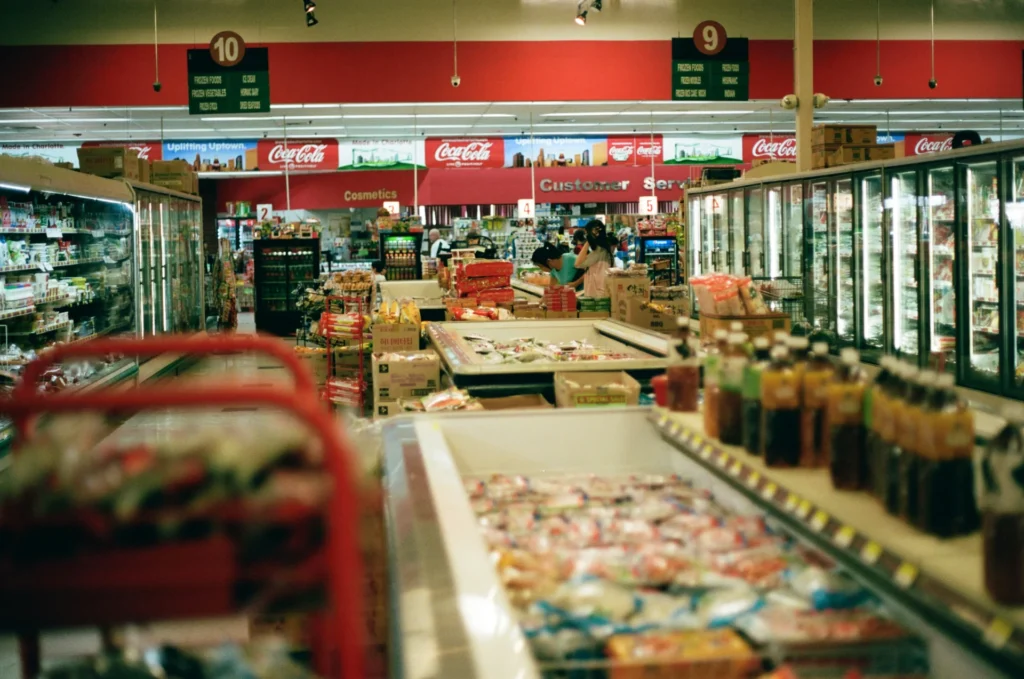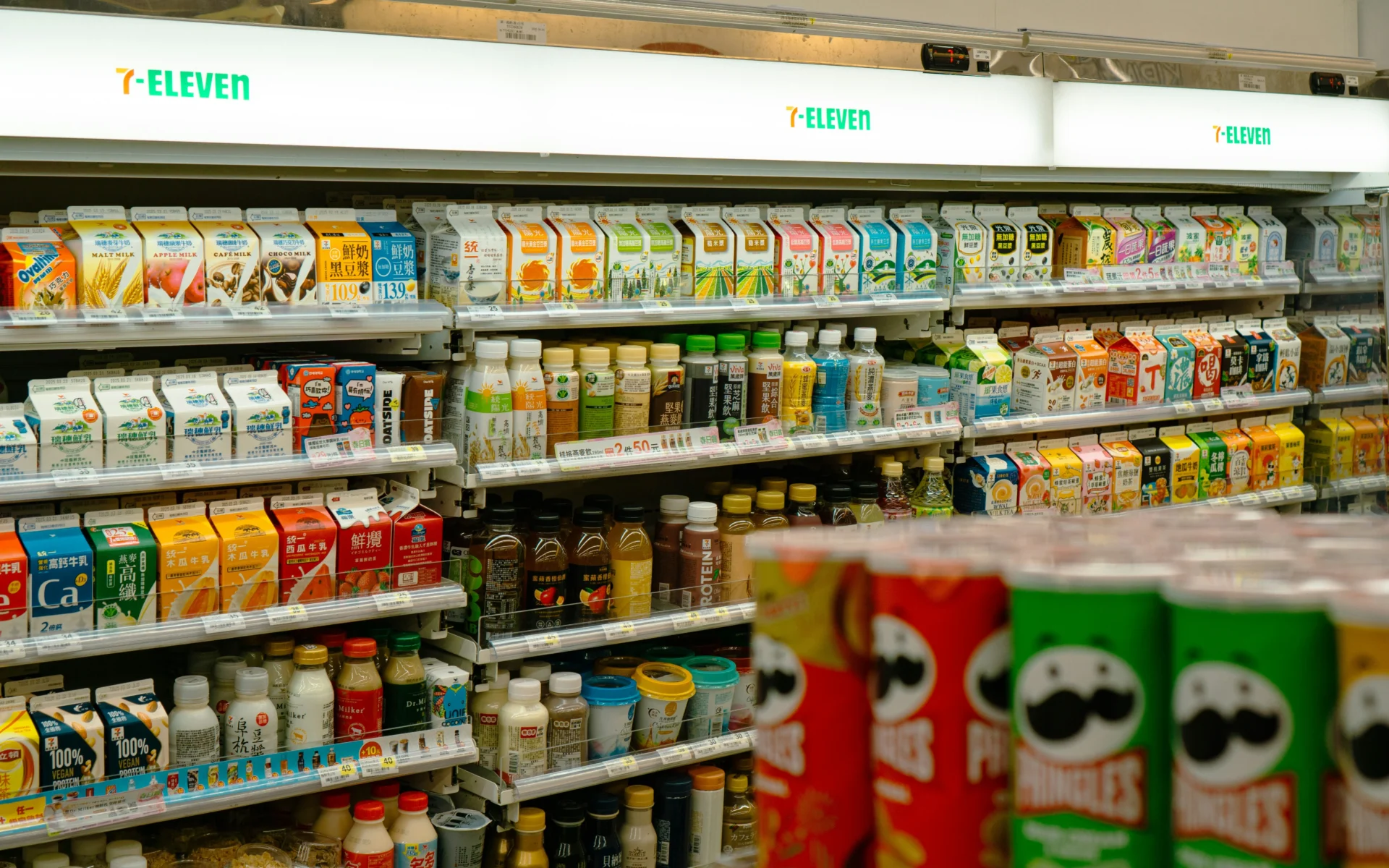The CPG beverage category has become one of the most dynamic and competitive areas in consumer goods. These drinks are shaping everyday habits, influencing what people grab from store shelves and add to their digital carts. A CPG beverage is more than just a product; it reflects lifestyle choices, values, and expectations for convenience. Brands must now deliver on health, sustainability, and flavor without sacrificing accessibility. Every product launch is part of a larger strategy involving branding, logistics, and digital outreach. As more shoppers discover new drinks online, traditional retail is only one part of the equation. Understanding how CPG beverages work helps explain why they continue to dominate across multiple channels.
What sets these beverages apart is not just what’s inside but how they scale and stay relevant. From legacy names to new market entrants, each brand must stand out and remain consistent across platforms. Consumer data now drives decisions on ingredients, marketing, and even packaging. The rise of influencer campaigns and digital storefronts has changed how brands engage and grow. Today, visibility means being present on shelves, screens, and social feeds. This blog breaks down what powers the CPG beverage industry and how it continues to evolve. It also answers common questions and explores strategies that drive success. Whether you are building a brand or studying the space, this guide offers the insights that matter.
Understanding What CPG Beverages Are
A CPG beverage is a packaged drink made for frequent use and mass distribution. “CPG” stands for consumer packaged goods—low-cost items sold quickly and replaced often. This includes sodas, health drinks, and other ready-to-sell beverages found in stores or online. These drinks are shelf-stable, pre-prepared, and designed for high brand visibility. Unlike made-to-order options, CPG beverages are built for consistency, travel, and long shelf life. They’re manufactured in bulk to meet ongoing consumer demand.
In terms of CPG digital marketing, these products usually have optimized packaging, ensuring that they remain appealing and accessible to large audiences.
What makes a beverage truly CPG is not just how it tastes but how it performs in the market. These drinks are designed to be purchased often and consumed regularly, typically falling into the convenience category. Their packaging is created for maximum visibility and clarity, often highlighting nutrition claims, use occasions, or ingredient stories. A well-executed CPG brand strategy makes the product recognizable, trustworthy, and engaging at a glance. It is this clarity and consistency that make consumers feel confident about buying the product again. The ability to replicate success across geographies and retailers is central to the definition of a CPG beverage.
Familiar examples help clarify the concept further. Think of bottled iced teas, shelf-stable smoothies, or energy drinks like Red Bull or Celsius. These products are found in a wide range of retail environments, from local convenience stores to nationwide supermarkets. Their wide availability, standardized packaging, and strong branding make them perfect case studies for successful CPG execution. Even a global powerhouse like Pepsi is considered a classic example, due to its widespread distribution and brand presence. Companies like these invest heavily in brand management for CPG to maintain their reputation and relevance. They represent the long-term payoff of thoughtful product design, effective marketing, and operational excellence.
Why These Beverages Qualify as CPG Products
What makes a beverage truly CPG is not just how it tastes but how it behaves in the marketplace. These drinks are built to be bought often and consumed frequently, often falling into the impulse buy or convenience category. Packaging plays a critical role and usually emphasizes portability, key nutritional claims, or distinct flavor experiences that catch the eye. A well-executed product is part of a scalable strategy that builds familiarity and trust. The consistency of design and brand execution builds credibility, which is essential for shopper retention. In this context, shopper marketing for CPG becomes a core function of business success.
Branding is at the center of this process and acts as the bridge between product and perception. From typography to color schemes to label layout, every design element contributes to shelf visibility and consumer engagement. The best-performing products communicate their value within seconds, whether through health messaging, eco-labels, or lifestyle positioning. That’s why many top CPG beverages emphasize clean visuals with strategic wording like “low calorie” or “sustainably sourced.” This clarity helps them stand out in crowded aisles and across digital platforms. A strong brand identity is also crucial when expanding into new channels or regions. To support this, many brands work with CPG consultants to fine-tune packaging, claims, and visuals that resonate with target markets.
Another key factor is how often consumers interact with the product. CPG beverages are designed to be integrated into everyday routines, making frequency of purchase and consumption essential. This kind of repetition not only supports reliable revenue but also provides valuable behavioral data. Beverages that become daily staples, such as sparkling water or canned energy drinks, benefit from habit-driven demand. Their consistent use allows for pattern recognition, inventory forecasting, and rapid testing of new flavors or packaging options. These high-frequency products help marketers analyze trends and define more accurate CPG KPIs. Ultimately, frequency fuels brand growth and helps position a product as a trusted choice in the minds of buyers.
The Shifting Trends Defining the CPG Beverage Industry
Health and wellness are reshaping the CPG beverage industry. Functional ingredients like probiotics and adaptogens are now mainstream. Consumers want clean labels over sugary, artificial options. Even legacy brands are updating products to meet these expectations. What was once niche is now essential. Wellness is a core driver of innovation. This shift in consumer expectation has led to a demand for different digital trends for CPG that monitor wellness categories and product feedback more accurately. As transparency becomes a standard, brands that openly share ingredients and sourcing earn stronger customer trust.
Environmental responsibility is also reshaping how beverages are made and marketed. Many brands are moving toward compostable packaging, refillable formats, or lightweight containers to lower carbon impact. These shifts are driven by both regulation and conscious consumer behavior, especially among Gen Z and Gen Alpha shoppers. Companies that view sustainability as part of their marketing strategy for consumer product goods are seeing stronger long-term engagement. Beverage companies that commit to sustainability often use it as a core part of their marketing narrative. Retailers are beginning to prioritize shelf space for eco-friendly products, creating both pressure and opportunity for brands to adapt.
Innovation in flavor and format also plays a major role in keeping the industry fresh. Consumers now crave more than just hydration; they want an experience. From limited-edition flavors to global taste profiles like yuzu, tamarind, or lychee, bold creativity is becoming the norm. Social media has accelerated these flavor trends, giving brands immediate consumer feedback. This agility allows brands to test new ideas quickly and bring products to market faster than ever. Platforms that collect user generated content for CPG have made it easier to build hype and respond to demand in real time.

Distribution Channels That Power the CPG Beverage Market
A strong distribution model is key to CPG beverage success. Grocery and convenience stores provide crucial shelf exposure and trust with new buyers. But limited, costly space demands strong sales and effective in-store marketing. Securing placement often requires demos, promotions, and co-op ads. Brands must balance reach with performance to stay visible. Even the best products can’t grow without solid retail presence. It’s no longer enough to simply be on the shelf, but brands also need to understand retail-specific techniques like CPG retail marketing to ensure products move. The most effective brands treat retail as a strategic partnership, not just a sales channel.
Beyond physical stores, direct-to-consumer strategies are reshaping how beverages reach buyers. Selling via branded sites or platforms like Amazon gives brands control over pricing, voice, and customer relationships. Subscription models and online bundles drive recurring revenue and boost loyalty. This approach also allows for easier product testing and exclusive releases. Emerging brands are using DTC models to refine offers before scaling to retail. Companies that integrate strategies like utilizing Shopify for CPG brands gain the flexibility to manage inventory, launch marketing campaigns, and track analytics in one place. In this digital-first environment, being available online is just as critical as being in-store.
To scale efficiently, many beverage brands use third-party logistics providers. These partners handle storage, packaging, and distribution across channels while cutting internal costs. Some brands adopt hybrid models, mixing retail, DTC, and wholesale, for greater flexibility. This approach meets customers wherever they shop, from stores to apps. Managing inventory across channels requires accurate forecasting and quick decisions. Real-time data helps brands handle fulfillment, demand spikes, and seasonal changes.
How CPG Beverage Brands Build Consumer Loyalty
Loyalty in the CPG beverage space goes beyond flavor. Strong brands start with a clear, emotionally resonant message tailored to their audience. Whether centered on health, sustainability, or self-expression, the story must stay consistent across all channels. Repeating this message through packaging, social media, and support builds long-term trust. Brands that create this deep connection drive repeat purchases and earn organic advocacy. Consistent storytelling is what turns customers into loyal fans. These efforts often contribute to the CPG brand marketing experience, which connects storytelling with measurable outcomes. When done right, even a single purchase can spark a long-term customer relationship.
Visual consistency also plays a crucial role in creating brand recall. On crowded shelves, consumers make decisions quickly and often rely on visual signals to guide their choice. Bold typography, clean color palettes, and intuitive layouts help a product stand out without overwhelming the shopper. The goal is not just to attract attention but to build recognition over time. These same assets must translate well across social content, website design, and paid media. Brands that unify these elements strengthen the customer experience across touchpoints. That is why digital shelf optimization is essential in ensuring visual assets perform equally well in physical and online environments.
Digital engagement is another major driver of brand loyalty today. Social media offers brands a way to connect, listen, and co-create with their audience. Many brands use contests, feedback prompts, and real-time video to increase interaction. Some have even launched limited editions based on consumer polls or influencer input. These strategies make the customer feel like part of the process rather than just a buyer. When brands source and amplify user generated content, they not only boost reach but reinforce authenticity. This community-driven approach helps build a loyal following that extends beyond transactions.
The Future of CPG Beverage Growth
Innovation is key to staying competitive in the CPG beverage industry. As consumer expectations grow, brands now anticipate needs, not just meet them. R&D focuses on function, portability, and lifestyle fit—formulating drinks with nootropics, electrolytes, and other performance boosters. Packaging is evolving too, with powders, sticks, and pods designed for travel and sustainability. This constant evolution reflects the increasing role of CPG consulting, which helps companies identify white space and emerging demands. Staying ahead of the curve is no longer optional; it is the only path to sustained growth.
Data powers today’s fast-paced innovation in the beverage industry. Brands use feedback from loyalty programs, DTC channels, and campaigns to guide decisions. Digital metrics help them quickly adjust flavors, launch new products, and fine-tune pricing. AI tools further enhance this process by improving ad targeting, forecasting demand, and shaping creative strategy. The smart use of CPG data analytics gives growing brands the ability to act with the agility of startups while maintaining operational stability. These technologies are helping level the playing field between emerging brands and established giants. The better a company can interpret and act on data, the faster it can scale.
Brands that link innovation with data see the greatest impact. Connecting creative development with analytics creates a smart feedback loop that guides marketing and R\&D. This approach speeds up time to market and boosts product launch success. Teams that blend storytelling with data craft campaigns that truly resonate. To stay competitive, brands need integrated systems for analytics, marketing, and fulfillment. Investing in digital marketing solutions for CPG brands or working with various CPG marketing experts ensures that every aspect of growth is aligned across departments. When innovation is backed by insight, companies not only react to the market but lead it.
Final Thoughts
The modern CPG beverage landscape reflects the intersection of convenience, innovation, and consumer identity. From their design to their distribution, CPG beverages are built to scale quickly while adapting to ever-changing market expectations. They must balance cost-efficiency with bold creativity, regulation with experimentation, and brand loyalty with trend responsiveness. As consumer behavior shifts toward health, sustainability, and purpose, brands must evolve to remain competitive. That’s why storytelling, data analytics, and continuous R&D have become non-negotiables in today’s playbook.
Fishbat is a digital marketing agency has helped beverage brands grow through smarter, data-backed campaigns for over 10 years. With proven experience in the consumer brand marketing space, our team supports everything from go-to-market planning to creative storytelling and digital strategy. If you’re ready to elevate your beverage brand’s visibility, engagement, and growth, we invite you to connect with our experts. You can reach us at 855-347-4228 or email hello@fishbat.com for a free consultation. Learn more about our capabilities and past success stories at our About page. The journey toward scalable, lasting success in CPG beverages starts with the right strategy, and we’re here to help.


